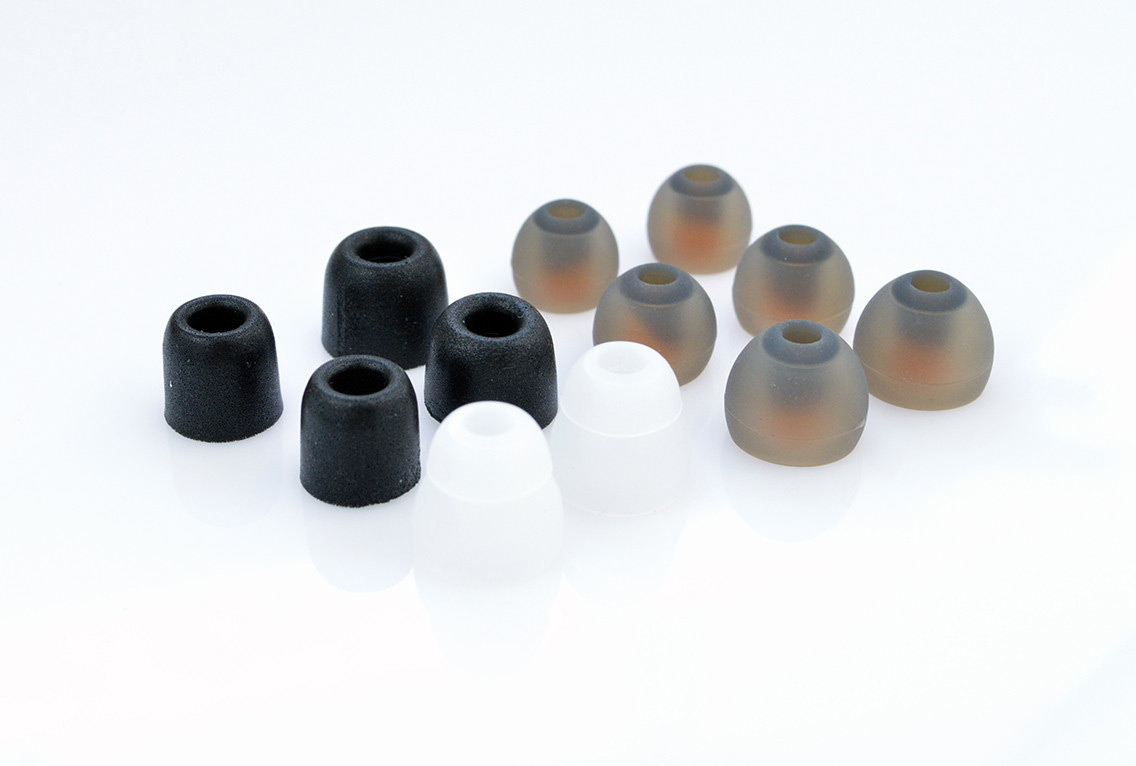To test the Trinity Hyperion and Delta earphones, we put them through their paces listening to a variety of tracks from different genres, all at CD quality or above, using a Sony Xperia Z2 smartphone. While listening we performed various tasks like running, working and simply relaxing. We factored in the earphones overall comfort while in use, but most particularly we considered their sound quality.
We also tried out all of the Delta's tuning filters to see how they affected the sound and searched for our personal preference with them.
Hyperion
At just £30, these are a very affordable set of earphones for a smartphone, but is the sound quality up to par?
The short answer is yes, they sound fantastic. Clarity is top notch, with all parts of the spectrum coming through loud and clear, regardless of volume. Cranking your phone or similar device up to its maximum does little to stress the Trinity Hyperions, so whether you prefer to listen to quieter versions or really test your eardrums, you can feel confident that you won't lose any of the crispness at the top end of the volume scale.
The bass on these earphones is excellent, with plenty of punch and that deep rumble at the low end that is so rarely seen in some of the more gamer-centric headphones we often review.
Despite the bass' strengths though, it is nice that the Hyperion's sound is not dominated by it. Classical music and more atmospheric chillout tracks sound fantastic too. Vocals don't get lost in the mix and you can pin point lots of individual instruments as part of really busy tracks.
The number of tips offered with these earphones is a nice touch
If there was one criticism of the Hyperion earphones is that the mid-range can sometimes feel a little weak, with the higher frequencies forward in the presentation. It is not a mood killer by any means and for some tracks is actually quite welcome, but it is worth noting that these are slightly treble-heavy earphones.
Without the ability to change tuning filters as with some of Trinity's other headphones, you can only adjust this on the software level, but a little tweaking with the EQ can eliminate most of the slight over abundance of higher frequency strength.
There is the usual issue with microphonics that in-earphones are commonly subject to as well, but Trinity has included a handy clothing clip which in the right spot can eliminate this entirely. If not, just loop the cable over your ears and it disappears altogether.
Comfort wise the Hyperions felt invisible. They are so small that you do not feel them once they are in place and as long as you pick the right size tip for your ears there was not much of an issue with them falling out during strenuous activity either.
Sound isolation is pretty strong. If you are listening through these at high volumes, be very careful jogging on a road, you could quite easily miss hearing a car coming up behind you. I cannot tell you how many times loved ones had to tap me for attention while reviewing these.
Delta
The Delta earphones are immediately more substantial than the Hyperion earphones, taking up that bit more room in your palm and in your ear. Despite this more obvious footprint though, they are much more subtle than their high frequency focused brothers – even when fitted with the treble tuners, which you would imagine would produce a similar sound.
However since these earphones come pre-fitted with the bassier silver tuners, that is what your first experience with these headphones is likely to be. The change was much more subtle than that we have seen with other bass-orientated in-ear tuners, even if it did make the bottom end feel that bit more capable.
Heavier tracks obviously saw the most benefit from such a tuner and if you like your tracks thick and rumbly, the bass tuner does a fantastic job of shaking your eardrums to the core. They do however start to bleed over into the lower-mid range, so chances are most users will prefer the more neutral sounding bullet grey tuners which are what Trinity describes as “natural” sounding.
With those tuners in place, you get a really crisp sound. Mids are clear and strong and the highs work well in tandem without that overbearing feeling that the Hyperions occasionally suffered with. If you like the idea of such a sound though, or just have songs that you think would benefit from such a high, high-end, then the purple treble boosting tuners are an option.
Changing tips is easy and has a dramatic impact on the type of sound the earphones produce
It is worth considering that they do cut back on the amount of bass in most tracks. There is still some punch, but do not expect these to offer much in the way of a low-end rumble. That is reserved almost exclusively for the bass tuners. The same can be felt with the gold tuners that come in their own separate plastic zip bag, but they do offer a very vivid, clear sound – something for the detail sound lovers out there.
My personal preference during testing was the natural tuners, though yours may be entirely different and that is why it is so nice that Trinity gives that option. Regardless of tuner choice though, audio quality on these earphones is excellent. A marked improvement over both stock smartphone headphones and the much cheaper Hyperions.
Like the Hyperions however, the Trinity Deltas are perfectly comfortable. They are larger and therefore more obvious and are a little easier to knock loose during high-intensity activities. However one really interesting note to take about the multi-weave cable, is that it almost totally eliminates all microphonics.
While many in-ear and over-ear headphones can struggle with vibrations from the cable materialising as a rubbing noise through the cans themselves, that barely happens at all with the Deltas, even if you rub the cable on clothing. It is still there in small doses, but it is far less noticeable. The Delta's cable is fantastic.
Both
Both sets of earphones come with a large number of alternative tips you can play around with. Although they do offer different feels for comfort and stability, there is some measure of sound difference between the silicon and memory foam tips too, so consider playing with the different types before settling to find the right sound for you.
Although there was some difference in the make up of the cables, both were extremely sturdy. The jacks too were excellent, able to hold on to the hardly-light smartphone we used for testing if it slipped off a desk or out of a pocket. Although we are sure Trinity would not recommend it, you can even lift that same phone back up to waist level by pulling on the cable.
It is tough.
 KitGuru KitGuru.net – Tech News | Hardware News | Hardware Reviews | IOS | Mobile | Gaming | Graphics Cards
KitGuru KitGuru.net – Tech News | Hardware News | Hardware Reviews | IOS | Mobile | Gaming | Graphics Cards




